Bryan Pearson's Blog, page 34
July 23, 2014
July 23: Loyalty Links & Likes
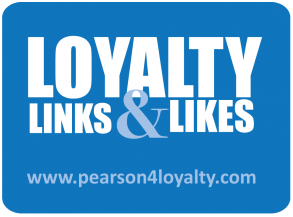 1. 5 Tips to Increase Customer Loyalty in the Age of Social Media – Funnel Envy
1. 5 Tips to Increase Customer Loyalty in the Age of Social Media – Funnel Envy
Social media may be one of the most effective mechanisms for increasing customer loyalty both early on in the relationship and throughout the customer lifecycle. This article takes a closer look at some techniques that work.
2. Brand Loyalty and The Millennial Mom – Business 2 Community
Word-of-mouth marketing is a key factor in brand loyalty, and seven out of 10 U.S. mothers share their favorite brands, products and services to other mothers on a monthly basis.
3. Augmented Reality: How Loyalty Programs Can Benefit From an Emerging Technology – COLLOQUY
Shoppers are eager for engagement. Augmented reality, the combination of real-life images with information, is keeping it real via mobile apps. In this feature, COLLOQUY looks at how Walgreens and others are using the technology.
4. Brand Promise, Customer Experience, and CMO Lessons for the CIO – ZDNet
Research into the gap between customer expectations and their experiences indicates profound implications for IT and the CIO.
5. Loyalty is a Retail Game-Changer for Oil Companies – Convenience Store Decisions
Convenience store and petroleum marketers who have already invested in a rewards program are gaining an edge on competitors who are still waiting to take the leap into loyalty.
July 21, 2014
Kimpton Karma: Good Data Going Full Circle
 When a person’s actions decide the fate of future existence, we call it Karma. When the sum of a company’s data is used to improve the future existence of both its customers and itself, we can call it Kimpton.
When a person’s actions decide the fate of future existence, we call it Karma. When the sum of a company’s data is used to improve the future existence of both its customers and itself, we can call it Kimpton.
The boutique hotel chain, long known for delivering personalized experiences, has reincarnated its loyalty program, InTouch, to one that better reflects the kinds of relationships it strives for with its guests. The program, introduced July 16, is called Karma.
Specifically, it is Kimpton Karma Rewards, and it is an apt example of the mutual benefits that can be derived from using data smartly and responsibly. After surveying its loyalty members two years ago, Kimpton found they put a higher value on experiences, such as its morning coffees, its daily hosted wine hours when guests gather to try new wines, and the ability to travel with pets, than on the points or miles they earned through hotel stays. So Kimpton changed its earnings model.
Hotel stays still count, but the greater focus now is on interactions and experiences with the hotel – events that actually reinforce an emotional bond. These activities range from what Kimpton calls “good deeds,” such as conversing with the hotel via social media, to activities it calls “random acts of Kimpton” – dining at a Kimpton restaurant or renting a Kimpton bicycle.
The more guests participate with the hotel, the higher they progress through its tier system, earning access to a wider spectrum of perks.
“We have to give first in order to get back. We have to be loyal to our guests before we can expect loyalty,” Maggie Lang, senior director of guest marketing at Kimpton, told COLLOQUY.
That said, Lang pointed out there is a payoff to such generosity: “There is definitely a strong revenue strategy behind what we are doing.”
Her example to COLLOQUY involved an ongoing perk called “Raid the Bar,” through which members receive $10 vouchers for use at the mini bar or hotel bar. Members who redeem these vouchers at the hotel bar typically generate $100 in additional spending, 40% north of the average bar bill.
The cherry in that experiential cocktail is the good karma associated with the friends and memories made at the bar. Even better, that good karma actually generates more Karma, because that is the name of the program’s earning currency. And so the cycle continues. Pretty clever.
Key to the program working well is that Kimpton gives each hotel and its employees the freedom to delight members as they see fit. Hotel computer screens reveal, along with guest history, whether a prize is recommended for a past good deed. The employee can use his or her discretion to provide that prize, maybe a room upgrade, based on availability and other factors.
This is a spot-on example of mobilizing data in ways that empower every participant to achieve benefits. In turn, the data itself should improve as a result. Based on what it is doing today, I am encouraged to see what Karma becomes in a few years.
July 16, 2014
July 16: Loyalty Links & Likes
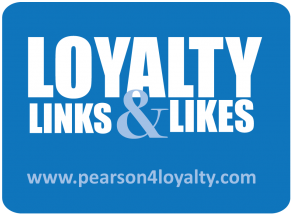 How Valuable Are Your Customers? – Harvard Business Review
How Valuable Are Your Customers? – Harvard Business Review
Not all customers are created equal. Figuring out which to focus on and invest in is critical if you want to maximize your profit.
One Does Not Simply Walk Into Customer Loyalty – Business 2 Community
Even though U.S. brands can collectively boast 2.5 billion loyalty program members, the number of programs in which a consumer is active in shows that loyalty programs do not necessarily make loyal customers.
Textbook Loyalty: Six Lessons on How to Improve Back-to-School Sales – COLLOQUY
American households are expected to spend billions of dollars on dorm and classroom supplies this year. This story lists six ways merchants can use loyalty initiatives and insights to increase basket size before the school year begins.
Relationships, Not Rewards, Are Key To Successful Loyalty Programs – Retail TouchPoints
Consumers’ overall engagement in traditional loyalty programs has declined consistently over the past four years. Winning back that loyalty today requires a mix of personalization, exclusivity and omnichannel engagement. This story provides five tips to do that.
Mobile is the Essential Link in Customer Experience – CMS Wire
The 2010 customer expected brands to provide an easy way to find what they were looking for. The 2014 customer expects brands to anticipate what they might want and present it to them, in context, perhaps even before they know they want it.
July 14, 2014
Reaching the Relevance Goal Through Sports and the Second Screen
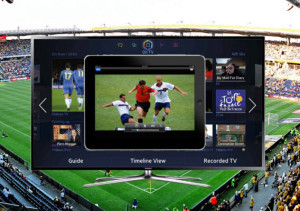 Moments after Germany scored its fourth goal in six minutes, I reached for my smart phone. I wanted to share that jaw-dropping World Cup experience with someone, and simply having the option to do so seemed to make the event more relevant to me.
Moments after Germany scored its fourth goal in six minutes, I reached for my smart phone. I wanted to share that jaw-dropping World Cup experience with someone, and simply having the option to do so seemed to make the event more relevant to me.
Four years ago, during the 2010 World Cup, it is unlikely I texted anyone. But the penetration of smartphones into nearly every aspect of our lives has changed that. In enabling us to connect with others immediately, the technology has elevated the engagement potential of so many otherwise solo activities.
I wonder how long before this mobile behavior hatches yet another handheld cottage industry, one in which marketers smartly use their data to connect with the sports fan in the moment?
The folks at Google wondered the same thing. In an effort to document how sports lovers use their mobile devices during big games, the writers at Think With Google watched games with soccer and football fans in Chicago and Denver. In the process, Google deducted how brands can produce more relevant marketing during the match.
“What’s clear is that fans are not only searching more on mobile, but they’re also searching during the game: a new pattern of behavior that barely existed four years ago, when most of the search activity happened immediately after the final whistle,” the article states. “This change creates more moments for marketers to reach fans on the mobile web, right when they’re most engaged.”
A few years ago, in my book “The Loyalty Leap,” I referred to this opportunity as the door to cultural relevance. It opens to any ongoing activities that regularly group people together – physically or now remotely. Today, that includes sports viewership.
The significance of this opportunity is spelled out in Google’s quote, “right when they’re most engaged.” Relevance requires timing. It proves the organization understands who its customers are and what they care about – right at the moment of caring.
For sports devotees, the intensity of that devotion peaks at game time. The Google report details how, in every living room the writers visited, fans talked about using their mobile phones to connect with other fans. Often it is to stay connected with family members, to seek validation or simply to be the first to share something cool or clever – a method of raising personal credibility.
One fan wished for a social network strictly for sports fans, because he couldn’t curse on Facebook without his mother seeing it.
So what’ll it be, wise marketers? A profanity-sanctioned fan network, or possibly a gamification app that rewards members for texting about a particular team? The opportunities exist across many industries, but the points will only go to those that can deliver in a timely, relevant manner.
July 9, 2014
July 9: Loyalty Links & Likes
 Three Simple Tactics to Increase Customer Loyalty – Marketing Profs
Three Simple Tactics to Increase Customer Loyalty – Marketing Profs
Companies with a rock-solid reputation that make a remarkable product priced fairly still only less than halfway to creating the kind of loyal, repeat buyers every business longs for.
Go Big or Go Home with Customer Experience – CMSWire
With so many companies adopting customer experience strategies and in some cases setting up dedicated customer experience teams, why are their efforts falling short?
New Pain Points Research: Profit, Personalization Key Concerns – COLLOQUY
A COLLOQUY survey of executives reveals that loyalty program profitability is among key concerns. Separate interviews with CVS, Men’s Wearhouse and Marbles: The Brain Store shows personalization and communication challenges.
How Big Data Can Improve People Practices and Policies – New Republic
Companies are not nearly as advanced when it comes down to knowing their own employees as well as their customers: A look at what makes employees happier and more efficient, as well as how to attract top talent.
Five Ways to Enrich Your Rewards Program and Gain Customer Loyalty – Business 2 Community
Rewards programs can initially bring customers back to a brand for repeat purchases but to work long-term, companies need to consider why the customer is engaging with the rewards programs to begin with – is it just for the reward or because the program has achieved brand loyalty?
July 7, 2014
Following the Dollar to Employee Loyalty: Two Case Studies
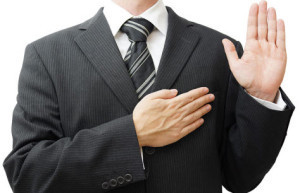 The Harvard Business Review once put the value of lifetime customers into dollars: A loyal pizza eater’s lifetime revenue can be $8,000, while a Cadillac owner’s is closer to $332,000.
The Harvard Business Review once put the value of lifetime customers into dollars: A loyal pizza eater’s lifetime revenue can be $8,000, while a Cadillac owner’s is closer to $332,000.
But what about lifetime employee value? To me the answer is simple: priceless.
Keeping good employees for a lifetime is not a realistic goal for many organizations these days, though it should be. The trick is maintaining their loyalty through a number of practices, and not just a good paycheck, free coffee and an occasional pat on the back. Empowerment is the key to employee dedication – give them the wheel and the freedom to be an acknowledged part of the company’s success.
Getting to that point may take some practice. My company, LoyaltyOne, has been testing several initiatives to engage our 1,600 employees, with varying degrees of success. But two of these efforts make pretty good case studies that I’d like to share.
The first, which we call Pass It On, is an interactive program designed to encourage employees to reward their peers. We worked with the company Achievers to create a platform so that each associate is given a bank of points that they can bestow to deserving co-workers. Associates can also recognize their peers without awarding points, by simply thanking them or posting an “applause” on the Pass It On employee website.
To keep track of activity, the company has set up leaderboards, kind of like scoreboards that share how often a “player” is acting as a recognizer or being recognized. This activity itself is tracked so recognizers are themselves rewarded for being good team players.
The results? As of June, 97% of our associates were active in the program, and 40% of the recognitions come with no points, indicating that LoyaltyOne has helped foster a culture of recognizing as well as rewarding.
The second initiative took place in December 2013, when LoyaltyOne launched the Move & Earn program to stimulate physical activity. With this initiative, the company gave all employees FitBit devices and encouraged them to set their own activity goals and monitor steps taken each day. To date, 59% of our employees are participating in the program, compared with an average of less than 50% for worksite wellness programs, according to the U.S. National Library of Medicine. Even better, employees who participate in the program have increased the number of steps they take on a daily basis by 27%.
Programs like these are a step in the right direction when it comes to employee loyalty. And let’s face it, a company will not have engaged, happy customers without engaged, happy employees. I’ll back it up with our own engagement score: 88% of LoyaltyOne associates said they are proud to work for the company.
As any marketer should know, you can’t put a dollar sign on figures like that.
July 2, 2014
July 2: Loyalty Links & Likes
 1. How Brands Can Build Love and Loyalty – Marketing Week UK
1. How Brands Can Build Love and Loyalty – Marketing Week UK
Service, ease of doing business and the number of touchpoints involved can all combine to encourage people to stick with, or switch from, a brand creating several challenges for senior marketers.
2. Big Data: A New Type Of Marketing ROI – Business 2 Community
To some extent, the biggest opportunity for many businesses large and small is to use big data to solidify the three areas of the marketing mix that comprise marketing and social media ROI.
3. Being All Things to All 35 Million Players: ‘FIFA’ Gets Personal With Gamification – COLLOQUY
The maker of one of the most popular video games in the world hopes to build a loyal audience through a gamified website.
4. Surprise, Delight… Then What? Five Tips to Keep the Customer Experience Momentum Going – Marketing Profs
The customer experience must be more than an occasional highlight. A good relationship with your customer base really boils down to day-in, day-out engagement.
5. The Booking Battle: OTAs Break Into the Loyalty Market – Huffington Post
Facing steep competition from fellow booking websites, online travel agencies have been experimenting with travel rewards as a means of incentivizing consumer loyalty — at the expense of straining relationships with the hotels with which they partner.
June 25, 2014
June 25: Loyalty Links & Likes
 You Can’t Buy Customer Loyalty, You Need to Build It – Business 2 Community
You Can’t Buy Customer Loyalty, You Need to Build It – Business 2 Community
Many companies think of loyalty as repeat sales, often achieved through discounts. But when discounts dry up, so does the loyalty, even if the customer base doesn’t immediately evaporate. Here’s how organizations can protect themselves.
Technology That Makes Every Shopper Experience Feel Local – Shopper Technology Institute
Most retailers are operating under the assumption that there is still a sharp line between local businesses and global or web-based enterprise, but consumers have abandoned that perspective.
The Gamification of Loyalty: An Eight-Part Series – COLLOQUY
The fifth in an eight-part series by gamification expert Gabe Zichermann examines how loyalty marketers can integrate gamification strategies to increase engagement.
Keep Customers Coming Back with Improved CRM – CMSWire
Companies that fail to nurture and retain current customers ultimately fail as a brand. Good CRM programs help companies attract customers, learn their preferences and shape brand initiatives.
What Kind Of Customer Experience Are Millennials (Gen-Y) Looking For? – Forbes
Millenials are the biggest generation in history, according to this story. What kind of customer service, environment and experience will encourage them to return again and again to a business?
June 23, 2014
L’Oreal App Holds Mirror to Consumer Insights
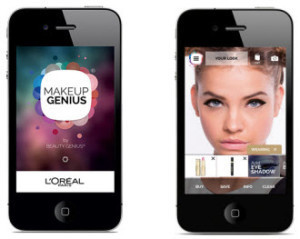 In beauty parlance, the digital app can be equated with the makeup brush – a discretionary tool, often soft on the edges, designed to deliver a desired effect.
In beauty parlance, the digital app can be equated with the makeup brush – a discretionary tool, often soft on the edges, designed to deliver a desired effect.
Add an element of product interaction and data analysis to the tool, and that app can result in a total loyalty makeover. That loyalty experience is now at our fingertips, thanks to L’Oreal Paris.
The beauty giant, whose luxury brands include Lancôme, Giorgio Armani and Kiehl’s, has recently unveiled Makeup Genius, an app that redefines digital engagement as finely as a charcoal liner. To the user, Makeup Genius is basically a beauty mirror that enables her (or him) to try on different eye shadows, blushers and other products without applying the actual product. In reality, this app is much more.
Makeup Genius enables simulated product testing by combining digital technology with computer-generated imagery. Using the device’s camera, it snaps a picture of the user and then reflects her movements, creating a real-time, digital way for her to test out cosmetics – anywhere.
On its face, this is very cool. But the intelligence, and opportunities, behind the app are its beauty.
There are so many opportunities for engagement, and to gather insights. The consumer can browse the options and create a shopping list that links to retailers where she can acquire the products. L’Oreal, meanwhile, has access to added insights through the data collected from that browsing, which it can use to create highly personal offers, communications and services. Further, the app provides a channel through which the beauty giant can interact with consumers and gather feedback and recommendations.
Outside of the consumer-brand experience, Makeup Genius can enable partnerships with the retail community that have potentially profound results – imagine how combining the browsing data with the actual sales data at the counter could reshape the shopping experience.
Makeup Genius is the latest in a series of loyalty initiatives by L’Oreal. The company also operates the Gold Rewards consumer loyalty program and Elite Loyalty, a program for professional salon operators. And a couple months back I wrote about Lancôme’s Elite Rewards program, which rewards members for their social media engagement and purchases.
These loyalty innovations provide a new look for a classic brand, but it is not a look that departs from its core appeal, which is also part of the beauty. L’Oreal knows what its customers value, and it is bringing it in full color, one application at a time.
And when a brand can create additional insights into the consumer, it makes for a beautiful outcome.
June 18, 2014
June 18: Loyalty Links & Likes
 1. Top 6 Most Common Loyalty Mistakes Marketers Make – Business 2 Community
1. Top 6 Most Common Loyalty Mistakes Marketers Make – Business 2 Community
Loyalty programs can deliver big benefits to a brand as well as its customers. But loyalty programs are complex and can fail when not executed properly.2.
2. Avoiding Traveler Drift: Using Promotions to Maintain a Competitive Edge – COLLOQUY
Reward programs are at their most effective when used to capture business that would otherwise be lost to competition.
3. Putting In Place First Class International Customer Experiences – Retail Week
Having a successful multi-cultural customer experience management program can set retailers on the road to international business success.
4. Marketers: Embrace the Extended Customer Lifecycle – CMSwire
With the social and economic changes driven by digital technology, marketing has a much larger and more complex role, extending throughout the duration of customers’ interactions with a brand.
5. Keeping Up With Consumers: Shoppers Shop for That Unique Experience – Huffington Post
Do you really know who your customers are? What do they look like, and where do they live? Are you using personal stories to shape marketing efforts?
Bryan Pearson's Blog
- Bryan Pearson's profile
- 4 followers



